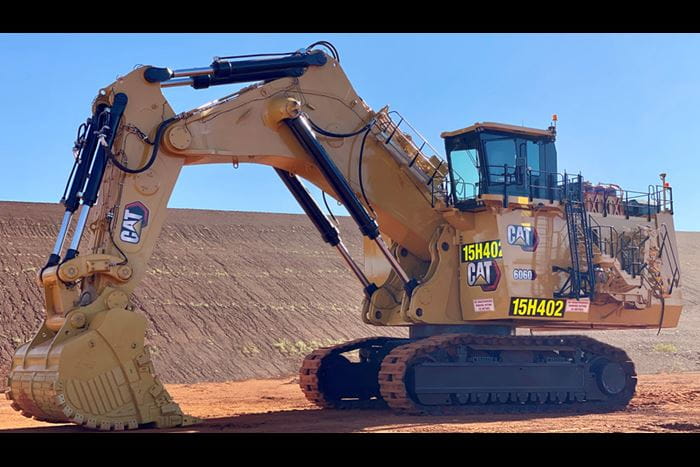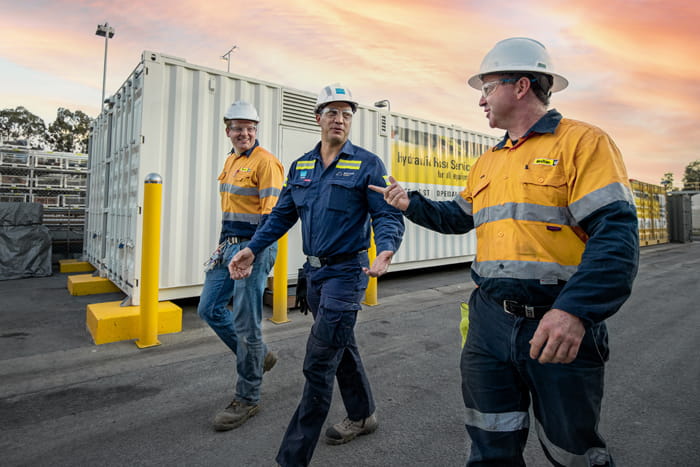Collaboration delivers world first autonomous drilling success for Thiess


Global mining services provider Thiess has implemented a world-first in Cat® autonomous drilling, with three rigs now able to be remotely operated by a single operator.
The project resulted in a 20% improvement in drilling performance, along with increased utilisation, with operating times above 20 hours per drill per day, and zero redrilled holes while operating autonomously.
The project involved the phased implementation of Cat MineStar™ Command autonomous capabilities at one of Thiess’ Australian coal projects. As an early adopter of the technology, Thiess worked closely with WesTrac and Caterpillar to collaboratively implement, test, enhance and evolve the systems and processes, even developing new software to help operators visualise drill patterns and progress in 3D.
According to WesTrac Project Manager for Technology Joanne Henry, the controlled rollout and collaborative approach have been the keys to a very successful project.
“WesTrac has really been the glue between Thiess and Caterpillar,” Joanne said.
“As the OEM, Caterpillar developed the drills and the technology layer to a certain point, but as a development partner, Thiess drove a lot of the requirements for ongoing improvements and there’s been constant collaboration throughout the project.
“WesTrac, as the local dealer, has been involved at every step, from deployment to onsite support, and troubleshooting of any issues that arose.
“This was especially important as it was difficult for some Caterpillar subject matter experts to attend sites due to COVID and border restrictions, however the team was able to keep it moving in the right direction.”
That direction is to ultimately reach full pattern autonomy. At present, it is at the point that the drilling cycle for one row, including autonomous tramming, is automated, with a single, remotely located operator issuing the commands to three drill rigs simultaneously.
By taking an iterative approach, the rollout of the Cat MineStar Command technology suite, and operator upskilling and acceptance, has been a smooth process for Thiess.
In 2019, Thiess mobilised its first Cat MD-series Drill at a coal site in Australia, equipped with Operator Mission Assist (OMA) technology. This still involved an operator being located in the cab, but a range of functions were automated with the drill able to navigate from hole to hole and auto-drill all holes in the selected row.
The next steps were to fit the machine with a Semi-Autonomous Drilling System (S-ADS) and perception system as well as mobilising an on-site Remote Operating Station (ROS).
WesTrac Technology Product Specialist Dylan Marsh said the decision was made to move that drill to a nearby site where further development and expansion of the program could be carried out in June 2021.
“We moved the drill and then fitted another MD-series drill with OMA, S-ADS and perception system capability,” Dylan said.
“That enabled us to meet the client requirement of getting multiple drills into a production environment and achieve a world-first – operating a Cat MD6250 and MD6310 from a single ROS located on-site.”
The team then progressed to multi-drill semi-autonomous operations over consecutive days, achieving a total operating time of 20 hours per drill, per day, for a 40-hour total per day.
Dylan said a third drill, another Cat MD6310, was fitted with the Cat MineStar Command technology in early 2022, to enable three autonomous drills to be remotely operated by a single operator.
Thiess reports that the phased approach to the program has delivered a range of people, technology and process benefits.
Thiess also says team members are more enthusiastic and engaged when being upskilled on autonomous technology, enabling a greater understanding and development of skills. Since the transition to multi-drill autonomous operations commenced in November 2021, Thiess has upskilled 15 operators across eight training competencies focused on general awareness, operating the drills in OMA and S-ADS, and accessing and maintaining autonomous drills.
Pleasingly, the team has also recorded zero autonomy-related injuries since mobilising the drills across the initial trial and live production sites.
The new technology has resulted in numerous operational improvements, including:
In addition, drill operators’ ability to reduce travel and pre-start times associated with shift handovers is helping to steadily increase utilisation hours with current operating times above 20 hours per drill per day. Autonomous drills are also able to continue operating safely during lightning and severe weather alerts.
Thiess reports that drilling consistency has also improved when operating in OMA and S-ADS from the ROS with the technology ensuring every hole is accurately placed and drilled to the proper depth and angle, regardless of the operator’s skill level or operating environment.
In 2021, the project team compared the performance of an autonomous drill and non-autonomous drill across a three-week period and found the autonomous drill was six per cent more productive. Since then, the team has recorded month-on-month improvements.
Accurate data collection has also been a significant advantage for the Thiess team, allowing management to review each drill’s performance and identify improvement opportunities in multiple operating contexts.
The iterative approach to rolling out the technology led to many process improvements and greater understanding of the technology. By starting its autonomous drilling pilot with OMA, Thiess was able to support its people to build capability and confidence while still working in the machine.
Operators were able to test and validate the benefits of the technology first-hand – seeing functionality and features including auto mast, level, drill and tram functionality while still in close proximity to the drill.
The Thiess leadership team was also able to understand the benefits of OMA with the machine producing the same result no matter the skill level of the operator.
The S-ADS technology then enabled the Thiess team to challenge and modify some existing processes to enable the continuation of operations during inclement weather and blasting events because people were outside the exclusion zones. Remote operation has in many cases allowed the drills to continue operating within these zones.
The phased approach has also enabled a greater focus on efficiencies with the team prioritising the management of shift handovers, drill area preparation, daily inspection scheduling, servicing and water management.
This has helped drive better integration between the technology and the mine’s systems and processes. The Thiess team was able to refine its suite of governance documents, including safety controls, and inspection and area preparation guidelines to help standardise the management and interaction of the drills across each site.

The long-term goal for Thiess is to evaluate the feasibility of operating autonomous equipment from an off-site operations centre.
In July, WesTrac and Thiess had the opportunity to explore the technical feasibility of this with a remote operations demonstration, where one of Thiess’ remote operator stations was installed at WesTrac’s Tomago facility.
During the demonstration, the team were able to successfully operate Thiess’ semi-autonomous drills at their coal project in the Hunter Valley, approximately 150km away, achieving a world-first of concurrently operating two production MD-series drills remotely from a Cat dealership. This was accomplished through the collaborative relationship between the teams at WesTrac and Thiess throughout this project.

Despite challenges presented by COVID-19, WesTrac has successfully delivered the first of six new Cat 6060 hydraulic mining shovels to Rio Tinto’s Pilbara operations.

Part 1 of 2: Bengalla reduces downtime caused by hose failure by implementing a tailored Onsite Hose Solution from WesTrac and Caterpillar.